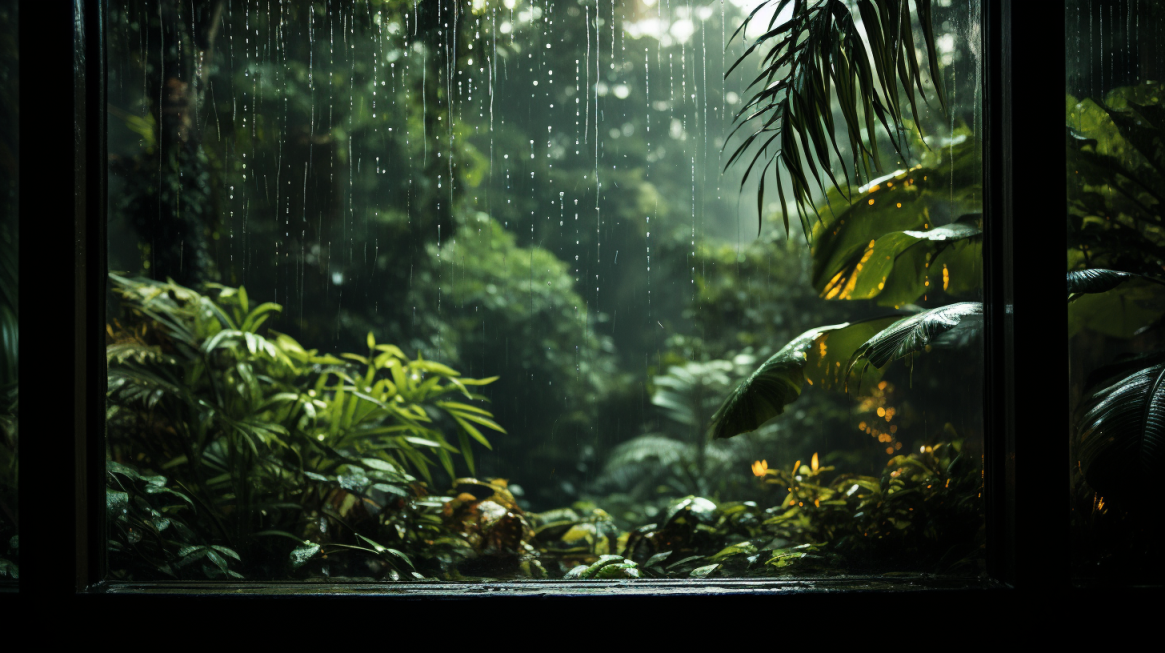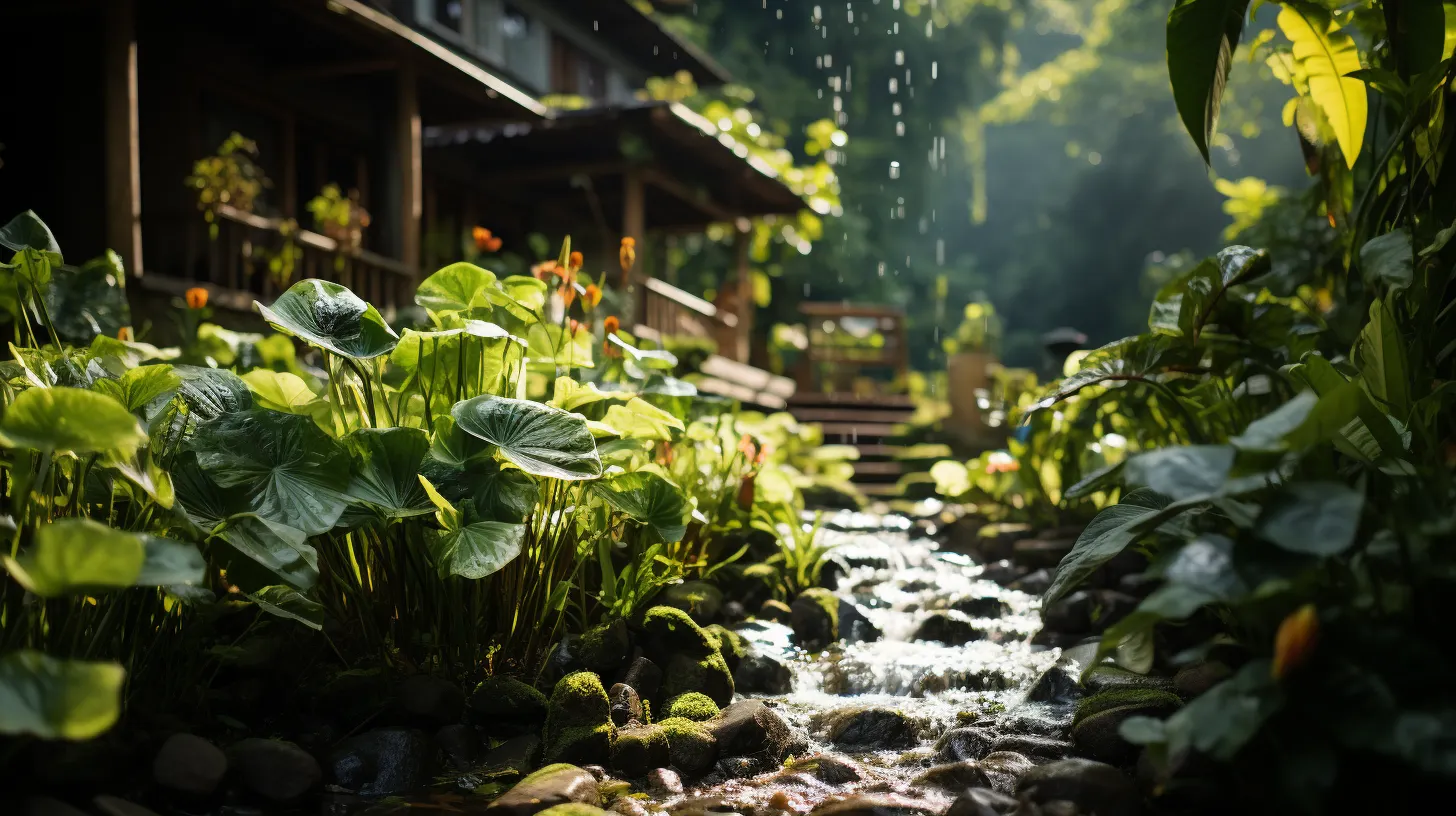Rain Barrels and Beyond: DIY Rainwater Collection Systems
Ever looked up at the sky during a downpour and thought, "What a waste!"? You're not alone. For those looking for a more independent water-setup, rainwater collection is a way of life for those who thirst for self-sufficiency and water conservation. From simple rain barrels to intricate harvesting systems, collecting rainwater is a step towards a self-sufficient future and a nod to our survivalist instincts.
Why is rainwater collection so essential? It's about more than just saving water; it's about harnessing a resource that's literally falling from the sky. Whether you're looking to reduce your water bills, create a more sustainable garden, or ensure a backup water supply, rainwater collection is a practical solution. Learn more about rainwater collection from the CDC or explore EPA's guide on rainwater harvesting. Let's dive in!

Why Collect Rainwater? A Drop Saved is a Drop Earned!
Why let precious rainwater go down the drain when you can harness it for various uses? Here's why collecting rainwater is more than just a drop in the bucket:
- Environmental Benefits: Rainwater harvesting reduces the demand on public water supplies, promoting water conservation and environmental sustainability. It's a way to give back to Mother Earth by using what she freely provides. Check out this comparative analysis of rainwater harvesting.
- Economic Advantages: The initial investment in a rainwater harvesting system can be offset by reduced water bills. It's a cost-effective solution, especially in areas with high water costs or limited water resources. Read more about the economic benefits of rainwater harvesting.
- Survival and Self-Sufficiency: In a world where water scarcity is a growing concern, having your rainwater collection system is like having a lifeboat on a sinking ship. It's about being one step ahead, ready to thrive when others merely survive. Learn how rainwater harvesting can be more cost-effective compared to traditional water supply methods.
- Quality Control: By collecting and treating rainwater, you have control over the quality of the water you use. Follow best practices for application of harvested rainwater to ensure safety and purity.
- Emergency Preparedness: In times of drought or other emergencies, a rainwater collection system can be a lifesaver. It's not just about preparing for the worst; it's about thriving in any situation.
Collecting rainwater isn't just about saving money or the environment; it's about embracing a lifestyle that values every drop. It's about connecting with nature, taking control of your resources, and making conscious choices that benefit you and the planet. So grab a bucket, set up a barrel, and let's make every raindrop count!
Navigating the Legal Waters: Laws and Regulations of Rainwater Collection
Rainwater collection isn't just about setting up barrels and watching them fill; it's a practice that's governed by laws and regulations. Understanding the legal landscape is crucial to ensure that your rainwater collection system is above board. Let's explore the legalities:
- United States Regulations: In the U.S., rainwater harvesting regulations are handled at the state level. Some states encourage rainwater collection, while others have specific restrictions. For example, California allows rainwater harvesting from rooftops without a permit, while states like Colorado and Utah have certain limitations. Dive into the state-by-state regulations or explore the legal frameworks in the United States.
- International Guidelines: While there are no specific international agreements governing rainwater harvesting, various organizations promote sustainable water management practices. The International Code Council (ICC) and the Canadian Standards Association (CSA) have developed a joint standard for rainwater harvesting systems. Learn more about the ICC and CSA joint standard.
- Local Government Enforcement: Local governments enforce rainwater harvesting regulations through permitting processes, inspections, and monitoring. Penalties for non-compliance may include fines or legal actions. Understand the local government's role in enforcing regulations.
- Homeowners Associations (HOAs) Rules: In some cases, HOAs may have rules and regulations related to rainwater harvesting. It's essential to check with your local HOA to ensure compliance. Read more about HOA restrictions on rain barrels and rain harvesting systems.
- The Importance of Compliance: Adhering to legal regulations isn't just about avoiding penalties; it's about responsible and ethical rainwater collection. Compliance ensures safety, quality, and community harmony. Explore rainwater harvesting laws you need to know about.
Navigating the legal waters of rainwater collection might seem daunting, but with the right knowledge and resources, you'll be collecting raindrops without a hitch. Remember, laws and regulations are there to guide us, not hinder us. They ensure that our pursuit of self-sufficiency aligns with community standards and environmental stewardship.
So, grab your legal compass, chart your course, and set sail on the rainwater collection journey. The legal seas may be choppy, but with this guide, you'll be steering with confidence!

How to Set Up a Rainwater Collection System: A Comprehensive Guide
Step 1: Select the Catchment Area
Start by assessing your roof to ensure it's clean and made of suitable material for collecting rainwater. The catchment area, such as rooftops, must be free from debris, leaves, and moss to minimize contamination.
Step 2: Install Gutters and Downspouts
The next step involves installing gutters and downspouts to direct the flow of rainwater. Regular inspection and cleaning of these components are essential to prevent the buildup of contaminants.
Step 3: Pre-Tank Filtration
Before the water enters the storage tank, it's crucial to install a pre-tank filter to remove large debris and contaminants. This step ensures that the collected water is free from significant impurities.
Step 4: Choose the Right Storage Tank
Selecting a suitable tank is vital for the success of your rainwater harvesting system. The tank must comply with local regulations and be appropriate for your specific needs. Explore the different types of tanks available to find the one that fits your requirements.
Step 5: Water Treatment
Testing the water quality to determine if there are harmful germs, chemicals, or toxins present is essential. Depending on the test results, treatment options may include filtration, chemical disinfection, or boiling.
Check out our other blog on different water purifcation methods here!
Step 6: Plumbing and Distribution
Connecting the storage tank to your home's plumbing system must be done following local plumbing codes. Proper plumbing ensures that the harvested rainwater can be used effectively within your home. Here's a guide to help you with the plumbing process.
Step 7: Monitoring and Maintenance
Regular monitoring of the water quality and annual testing is vital to ensure that the water remains safe for use. Regular maintenance of the tank, gutters, and other components is also crucial.
Step 8: Cost-Effectiveness Analysis
Understanding the costs involved in setting up and maintaining a rainwater harvesting system is essential. Compare these costs with traditional water supply methods to assess the cost-effectiveness. Here's a comparative analysis to guide you.
Step 9: Celebrate Your System
Congratulations! You've built a system for water conservation and self-sufficiency. Enjoy the benefits of your hard work and embrace a sustainable lifestyle.
By following this comprehensive guide, you'll have a fully functional rainwater collection system that not only saves rain but also contributes to a more sustainable and self-sufficient way of living.
Troubleshooting & Maintenance Considerations
Troubleshooting Common Issues
Rainwater collection systems are generally low-maintenance, but they can develop problems. Here's how to tackle some common issues:
- Clogged Filters: Regularly inspect and clean filters to prevent clogs. Learn more about filter maintenance.
- Algae Growth: Keep your tank covered and regularly clean it to prevent algae growth. Here's a guide on tank maintenance.
- Water Quality Issues: Regularly test the water and treat it as needed. Refer to CDC guidelines for water quality maintenance.
Regular Maintenance Tips
Maintaining your rainwater collection system ensures its longevity and efficiency:
- Inspect the Catchment Area: Keep the catchment area clean and free from debris.
- Clean Gutters and Downspouts: Regular cleaning prevents contamination. Here's a guide for maintaining these components.
- Monitor Water Quality: Regular monitoring ensures safe water. Learn more about monitoring practices.
Conclusion: Embrace the Rain
Rainwater collection isn't just about saving water; it's a step towards self-sufficiency and sustainability. By understanding the setup, troubleshooting, maintenance, and legal considerations, you can build and maintain an effective rainwater collection system that aligns with your values and local regulations.
Remember, the initial investment in a rainwater harvesting system can be offset by reduced water bills and lower reliance on conventional water sources. Plus, you're contributing to environmental sustainability. So go ahead, embrace the rain, and thrive!







